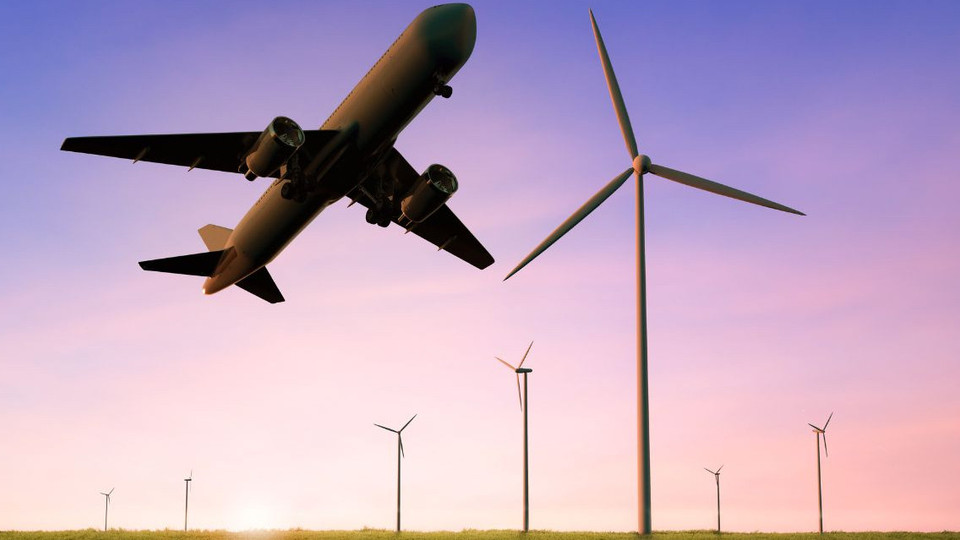Aug 24, 2023 Jan Uphues
ShareIn an era marked by growing environmental concerns, the aviation industry has taken center stage in its commitment to drastically reduce carbon emissions over the next three decades. This commitment is reflected in a multitude of initiatives undertaken by various stakeholders, demonstrating a concerted effort to create a more sustainable aviation landscape. From major airlines and international associations to specialized agencies and collaborative partnerships, the industry is uniting in pursuit of the common goal: achieving net-zero carbon emissions. This is evident from many industry initiatives, including:
- Airlines for America (A4A), the association representing many major U.S. airlines, announced that its members have committed to reducing carbon emissions by 2050.
- The International Air Transport Association (IATA) approved a resolution asking the global air transport industry to achieve net-zero carbon emissions by 2050.
- The International Civil Aviation Organization (ICAO), a specialized agency of the United Nations, launched its Global Framework on Aviation Alternatives Fuels (GFAAF), provided a regularly updated database on sustainable aviation fuel (SAF) developments.
- Sustainable Aviation, a collective of airlines, airports, manufacturers, air navigation service providers and other business partners, is committed to collaborative ways for improving the UK aviation industry’s environmental performance and achieving sustainable growth.
- The International Business Aviation Council (IBAC) and the General Aviation Manufacturers Association (GAMA) set goals to achieving carbon-neutral growth from 2020 on and halving total CO2 emission by 2050 relative to 2005 emissions.
These are just some examples demonstrating the industry’s commitment for more sustainability in aviation. One way the aviation industry is making major sustainability strides is through its application of new products and technologies. From sustainable aviation fuels (SAFs) to AI-driven optimization software, airside vehicles fueled with both hydrogen and diesel fuels, and video analytics and 3D lidar to monitor the number, size, and volume of passenger baggage, these and other advanced technologies are helping airlines, airports and ground handlers lower their greenhouse gas emissions.
AVIATION´S SUSTAINABILITY PROGRESS
At the end of 2022, nearly 200,000 commercial flights using SAFs had taken place. That number has no doubt increased. Both airlines and airports are also taking measures to reduce their carbon footprints. Here are some examples:
- Edmonton International Airport is using a prototype electric-powered aircraft de-icing vehicle that saves 35 tons of carbon emissions annually. Additionally, it is having a portion of its airside vehicles retrofitted to run on both hydrogen and diesel; a measure expected to reduce diesel consumption and CO2 emissions by over 40%.
- United Airlines is making investments in SAFs and infrastructure improvements to support its sustainability goals. In 2021, the airline became the first commercial airline to fly a fully SAF-powered flight.
- Virgin Atlantic is planning a Boeing 787 demonstration flight this year (2023) – the world’s first net-zero transatlantic flight using SAF, which would take off from Heathrow Airport (London) with a JFK Airport (New York) destination. Due to safety regulations, which permit a maximum of 50% SAF blended with kerosene, 30% of the flight’s emissions will be offset with the use of carbon removal technology.
- Seattle-Tacoma International Airport’s (SEA Airport) surface area management is using computer vision technology to monitor its ground handling and service activity in areas around its parked aircraft at a gate, as well as using Machine Learning (ML) in the development of a sound/acoustic sensor to determine if an aircraft is using its auxiliary power unit (APU) which emits CO2 and other greenhouse gases and increases fuel costs. The sensor would alert pilots when to switch from an APU to low-carbon electricity when parked.
- KLM Royal Dutch Airlines has participated in an industry-wide goal to reduce emissions through better fuel efficiency, the use of renewable biofuels and smarter in-plane technologies, in addition to launching its “Fly Responsibly” campaign to educate passengers on planet-friendly alternatives.
- Cathay Pacific added six new fuel-efficient Airbus A350s to its fleet and plans to use biofuels on its planes to achieve up to 80% reduction in its traditional fuel use. It has also gone paperless in its cockpits, and it has removed 200 million pieces of single-use plastics from its annual operations.
- Delta Air Lines committed $1 billion from 2020 to 2030 towards reducing all of its fossil fuel emissions using clean air technologies and other projects to mitigate emission waste. It also is removing all single-use plastics from its flight, anticipating the elimination of 300,000 pounds of plastic each year.
In addition to these examples for more sustainability in aviation, airports around the world are embracing AI-driven data to fuel autonomous vehicles and self-direct equipment that streamlines many tasks such as aircraft fueling, making them more efficient, cost-effective, and sustainable. The use of power grids and microgrids are optimizing airport power grid operations, enabling both airlines and airports to electrify buildings and support vehicles while reducing their fossil fuel dependency. There also has been an increase in the “greening” of passenger shuttles, belt and container loaders, and catering trucks through fleet electrification.
OPTIMIZATION SOFTWARE PROVIDING ENERGY-SAVING DECISION-MAKING SUPPORT
Across wide areas of airline, airport and ground handling operations, the application of optimization software is also having a measurable impact on aviation sustainability. From optimizing workforce management and task prioritization, to real-time planning and turnaround management, ground handling equipment location and resource management, and disruption management, optimization software’s mathematical algorithms, combined with Artificial Intelligence, Machine Learning, Operations Research, and fuzzy logic are facilitating advancements in process optimization, resilience, and sustainability.
THE SUSTAINABLE AVIATION BUYERS ALLIANCE
The aviation industry is not alone in its drive to achieve net-zero emissions, In April 2023, the Bank of America, Boom Supersonic, Boston Consulting Group, JPMorgan Chase & Com Meta and RMI, a clean energy nonprofit joined to form the Sustainable Aviation Buyers Alliance (SABA) for the purpose of purchasing SAF certificates at scale. The intent is to strengthen demand for SAFs and bring the supply and cost to a level that supports net-zero goals. SAFs represent the most effective way to decarbonize the aviation industry. This highly competitive SAF certificate procurement program will also provide funding for increased SAF purchases, standardization and transparency for greenhouse gas emissions accounting and reporting measure, and signal SAF producers to increase production.
What are the next steps the industry has to take for more sustainability in aviation? How can single passengers or smaller organization units contribute? Let us know your thoughts!
About our Expert

Jan Uphues
Marketing Manager
From the exhilarating rush of his very first flight, Jan Uphues was captivated by the world of aviation. Though that maiden voyage had its jittery moments, it set the course for a lifelong passion. Starting at INFORM in 2018, he combined it with his second love: crafting compelling content.


